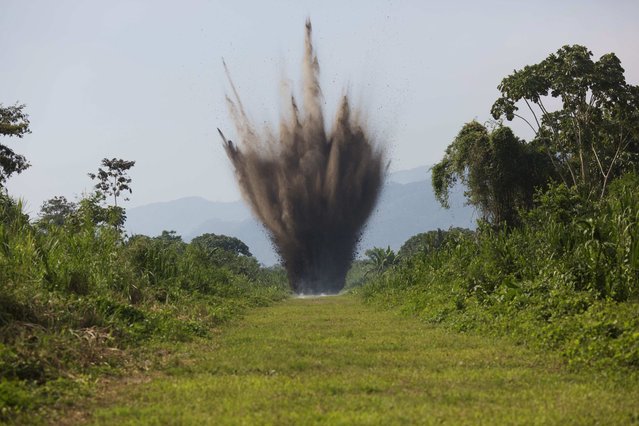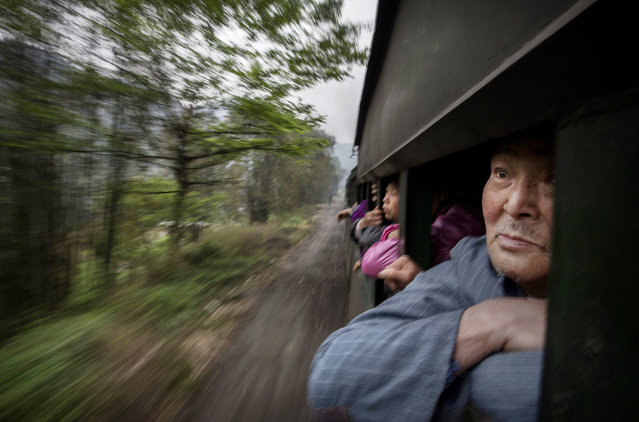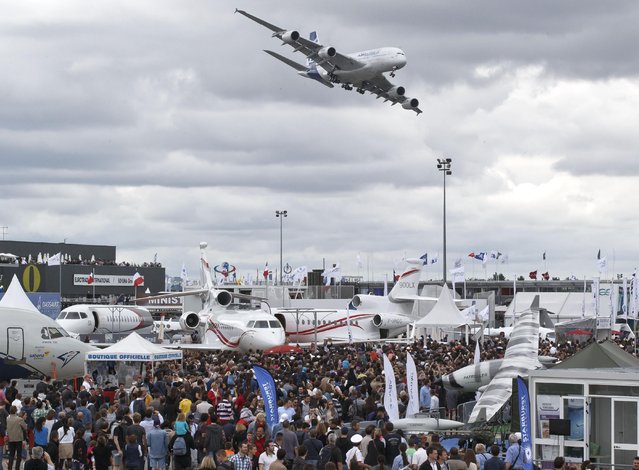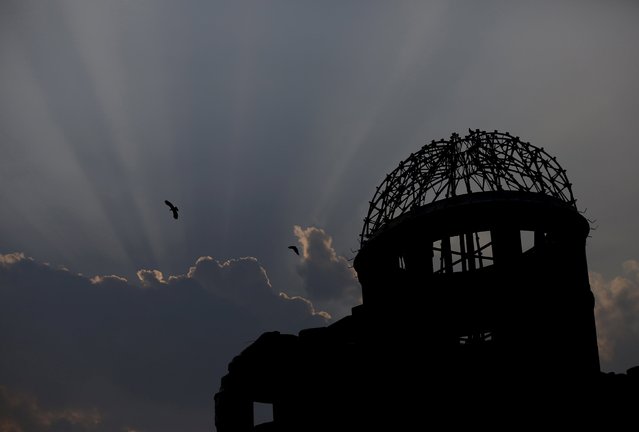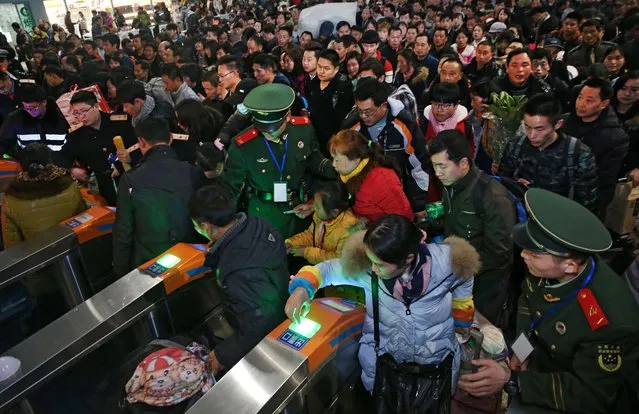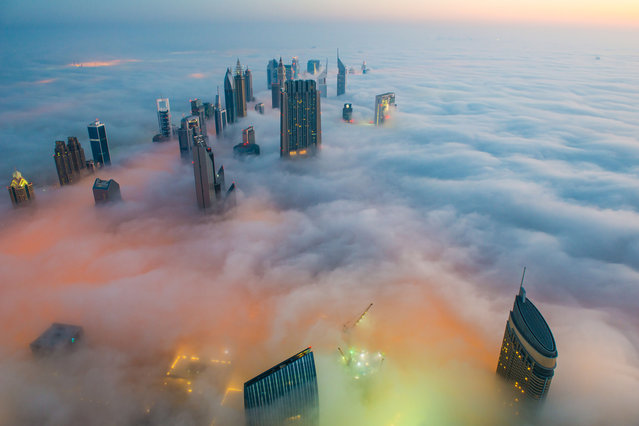
This breathtaking view from the world's tallest building shows a thick blanket of smoggy fog smother Dubai. The mist almost completely covers the huge sculptures which dominate the skyline. And the spectacular view from the Burj Khalifa – standing at a staggering 828 metres tall – shows the city engulfed by the thick fog. And the smoggy fog reaches heights of up to 400 metres as it rises above the impressive skyscrapers in Dubai. (Photo by Bjoern Lauen/Solent News/SIPA Press)
11 Aug 2014 11:03:00,post received
0 comments

